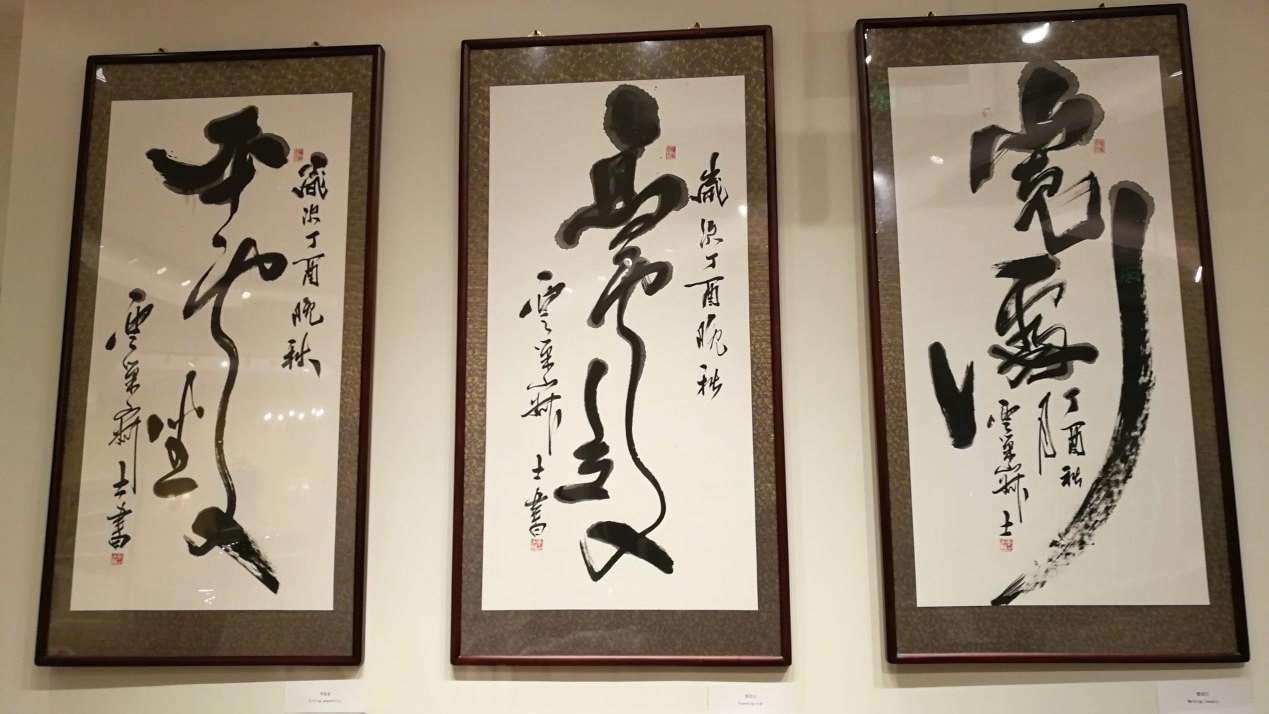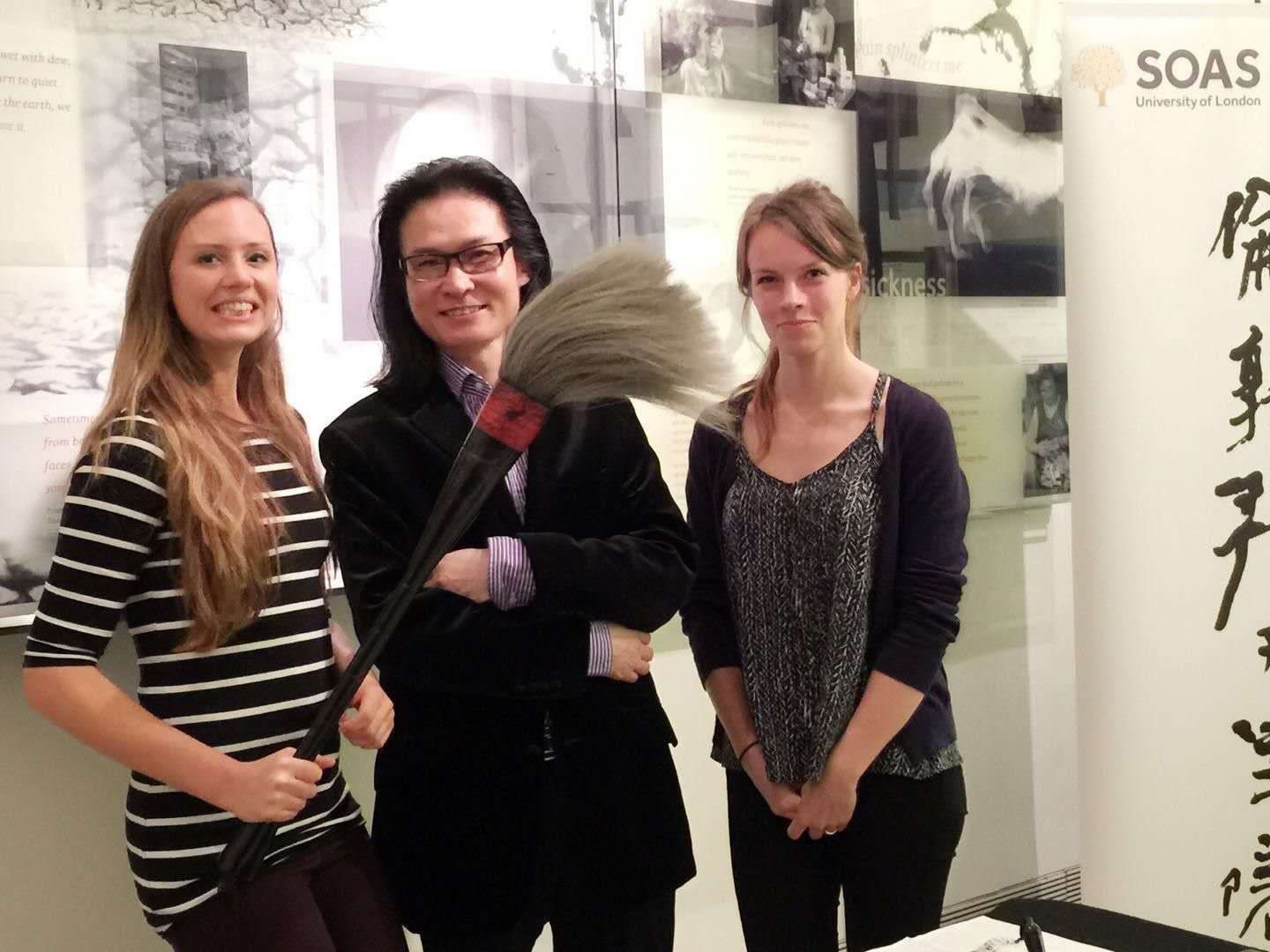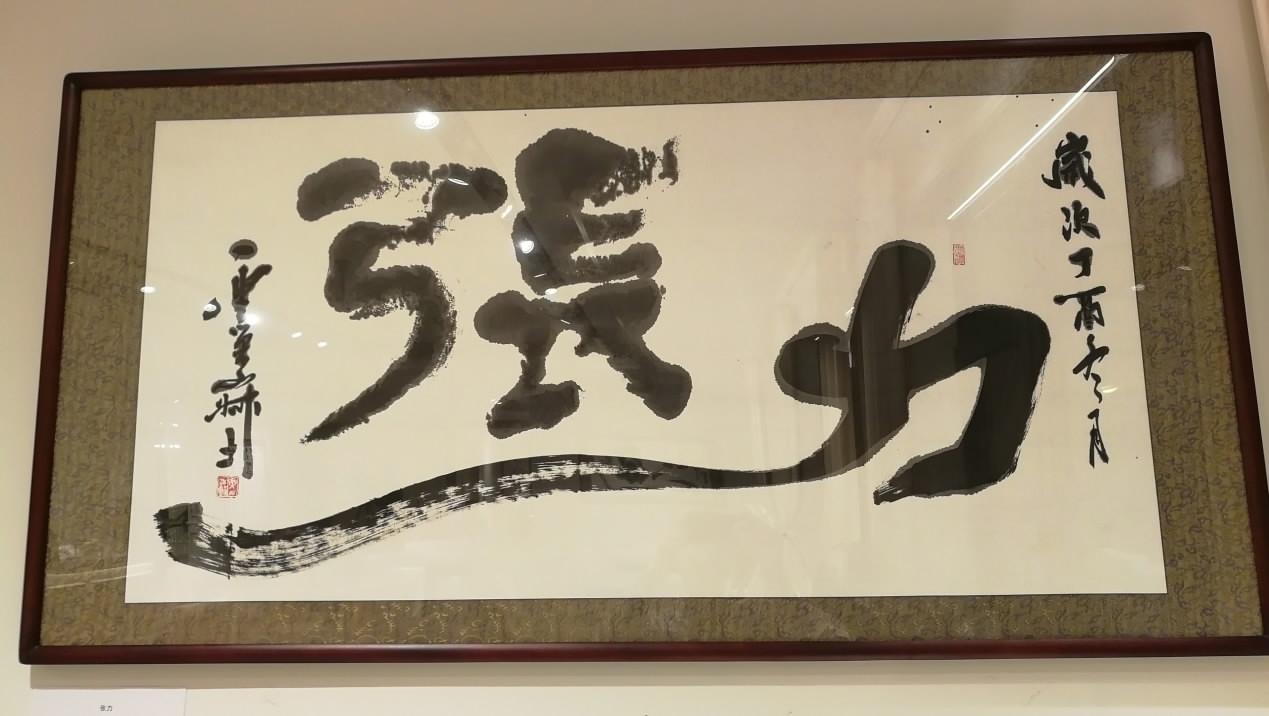
Culture
19:03, 19-Jan-2018
Exhibition of renowned Chinese calligrapher opens in Beijing
By Yu Fengsheng

When foreigners view Chinese calligraphy or Shufa, what springs to their minds? Well, we might find some answers from the ongoing exhibition of renowned Chinese calligrapher Zhao Yizhou in Beijing. For decades, the calligrapher has been challenging viewers' perceptions.
The exhibition opened on Tuesday night at the British House
in Beijing. Entitled "Chasing the Unseen," it showcases over 20
of Zhao's works.

Zhao Yizhou's calligraphy work. /CGTN Photo
Zhao Yizhou's calligraphy work. /CGTN Photo
He is widely regarded as the finest contemporary Chinese calligrapher living in the UK. Many of his works have been collected by the British museum and private collectors.
The artist's unusual combination of tradition and innovation creates a unique vitality and originality that highlights the principles of Chinese Shufa.

Chinese calligrapher Zhao Yizhou. /CGTN Photo
Chinese calligrapher Zhao Yizhou. /CGTN Photo
Many pieces are deeply concerned with the psychological and philosophical potential of Shufa.
"I am always thinking how we can turn Shufa into an international art symbol like painting, music and dance," he said. "In the English dictionary, the word for Shufa-calligraphy means beautiful writing. And this is also the recognition of many foreign viewers have toward Shufa. They're always asking me if Shufa can be typed by computer just like other language characters."
Zhao also said that Shufa is one of China's most important traditional art forms. And yet it is not as popular worldwide as other traditional Chinese art forms.

One of Zhao Yizhou's exhibits. /CGTN Photo
One of Zhao Yizhou's exhibits. /CGTN Photo
So he was surprised to see that his works were well-received by foreign visitors.
"Most of the foreign viewers don't speak Chinese, so they won't focus on one individual character of my Shufa," he said. "They viewed it as a whole. If I assumed my work was a forest, they would first see the whole forest rather than each tree, so they can enjoy the beauty of my Shufa more easily. This was why my works were better appreciated by them."

An example of Zhao Yizhou's calligraphy. /CGTN Photo
An example of Zhao Yizhou's calligraphy. /CGTN Photo
He told them not to simply treat Shufa as one form of language. He said he hopes that people's recognition towards this Chinese traditional art form will change in the future.
"I hope foreigners would use the term Shufa when talking about Chinese calligraphy and I hope the word Shufa can be officially added to English dictionaries in the future."
Calligraphers from around China were also in attendance at the opening of the "Chasing the Unseen" exhibition which will close in early March.

SITEMAP
Copyright © 2018 CGTN. Beijing ICP prepared NO.16065310-3
Copyright © 2018 CGTN. Beijing ICP prepared NO.16065310-3